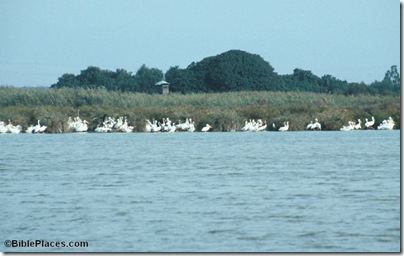Hebrew University announced the discovery of an ancient synagogue this week. Dozens of Galilean synagogues from the Roman and Byzantine (Talmudic) periods have been discovered, including ones not far from this one at Capernaum, Arbel, and Hammath Tiberias. Wadi Hamam is located at the base of the Arbel cliffs, and is the location of the end of “the hike” if you’ve ever climbed down.
Students with me last year who hiked from Khirbet Kana (biblical Cana) to Magdala probably passed right over the remains described below. From the Hebrew University website:
Remains of an ancient synagogue from the Roman-Byzantine era have been revealed in excavations carried out in the Arbel National Park in the Galilee under the auspices of the Hebrew University of Jerusalem.
The excavations, in the Khirbet Wadi Hamam, were led by Dr. Uzi Leibner of the Hebrew University’s Institute of Archaeology and Scholion – Interdisciplinary Research Center in Jewish Studies.
Dr. Leibner said that the synagogue’s design is a good example of the eastern Roman architectural tradition. A unique feature of the synagogue is the design of its mosaic floor, he said.
The synagogue ruins are located at the foot of the Mt. Nitai cliffs overlooking the Sea of Galilee, amidst the remains of a large Jewish village from the Roman-Byzantine period. The first season of excavations there have revealed the northern part of the synagogue, with two rows of benches along the walls. The building is constructed of basalt and chalk stone and made use of elements from an earlier structure on the site….
The excavators were surprised to find in the eastern aisle of the synagogue a mosaic decoration which to date has no parallels — not in other synagogues, nor in art in Israel in general from the Roman-Byzantine period. The mosaic is made of tiny stones (four mm. in size) in a variety of colors. The scene depicted is that of a series of woodworkers who are holding various tools of their trade. Near these workers is seen a monumental structure which they are apparently building. According to Dr. Leibner, since Biblical scenes are commonly found in synagogue art, it is possible that what we see in this case is the building of the Temple, or Noah’s ark, or the tower of Babel. The mosaic floor has been removed from the excavation site and its now in the process of restoration.
The rest of the story and a photo of the mosaic floor may be found here.

